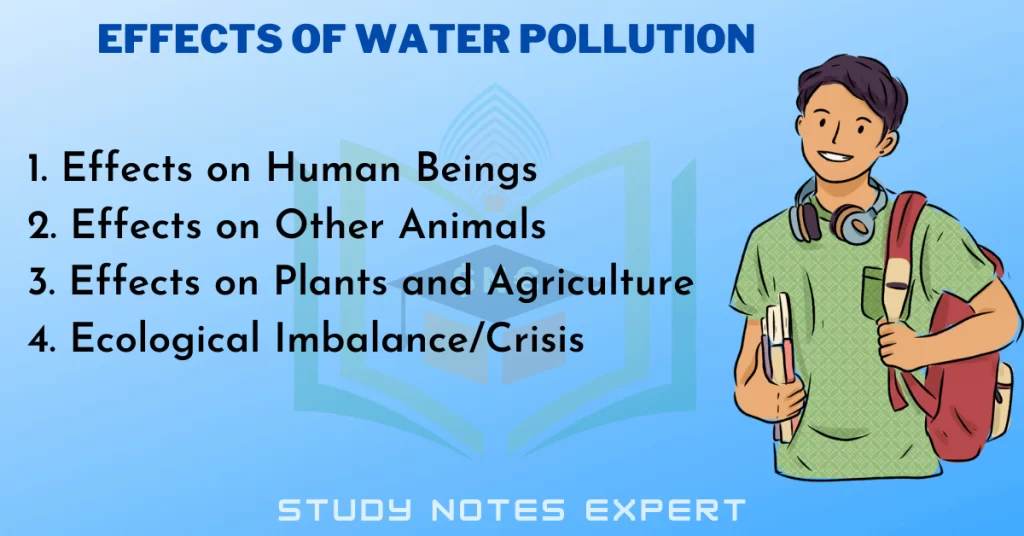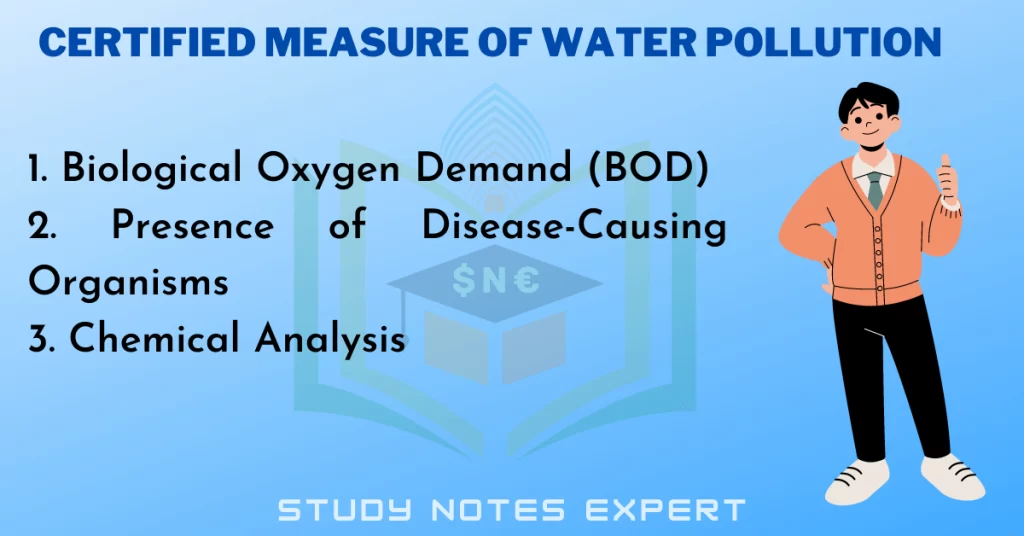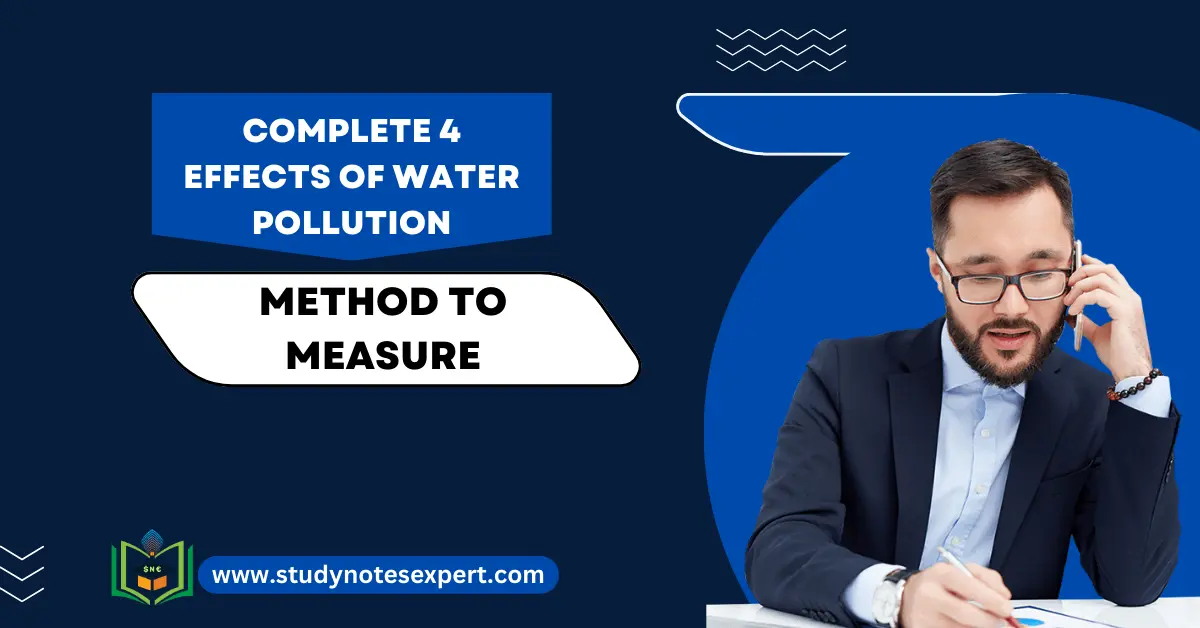Water pollution is the contamination of water bodies with substances that are harmful for living organisms. Also, it makes water unsuitable for human use. Pollutants can include chemical, physical, biological substances, thermal and radioactive energy. Common sources of water pollution include agricultural activities, sewage and waste disposal, industrial discharge, and oil spills. Now, we will discuss the effects of water pollution.
Authentic 4 Effects of Water Pollution

The effects of water pollution can be severe, including impacts on human health, the loss of aquatic life, and damage to the ecosystem. Now, we will discuss the effects of various water pollutants.
1. Effects on Human Beings
Water is the basis of human life and life in general. Life cannot even be imagined without it. We have no substitute for it. Every day an individual uses 135-liter water on average. Polluted water causes many diseases in human beings. The effect on human beings is one of the main effects of water pollution. The 1987 World Health Organization (WHO) presented a report on the effects of polluted water with some of the following points:
- Polluted water causes the death of at least 25,000 persons every year worldwide.
- 30% of the world’s total population, or almost 20 million people, cannot get pure water.
- In developing countries, 80% of child death is due to diseases caused by polluted water.
- Almost 10 million people worldwide suffer from diseases like cholera, dysentery and other harmful diseases caused by polluted water.
- The harmful effects of polluted water are increasing by 10% (average) every 5 years.
This report truly highlights the dangerous effects of water pollution. The main diseases caused by polluted water are as follows:
- Cholera and typhoid are water-borne diseases.
- Skin and eye diseases also occur due to contact with polluted water.
- Hepatitis, jaundice, polio, diarrhea, hernia etc., are due to polluted water containing types of viruses and microorganisms.
- Water accumulated in a place becomes dirty, producing mosquitoes, flies, worms etc. which are a cause of diseases like malaria, dengue, yellow fever and filaria etc.
- Chemical-contaminated water dissolves lead, fluorides, and mercury. Drinking this water, the hemoglobin level falls, and the body cannot get sufficient oxygen. It produces diseases related to the digestive, excretive, lung, and kidney diseases. Likewise, it weakens the bones and teeth and results in various diseases.
- Polluted water causes many blood diseases.
So it is clear that polluted water and human health cannot go together. Therefore, our responsibility is to control this situation; otherwise, our existence is threatened.
2. Effects on Other Animals
As polluted water is dangerous for humans, so is it for other creatures. It is more dangerous for other creatures because they are not conscious beings. Many experiments are done. Sometimes, we do not understand and know the reason for sickness. The effects of water pollution is also shown on other animals. As a result, some living beings and species of creatures start disappearing. For instance, in the regions of Haryana, kites, and vultures have become extinct, while there is a decrease in the population of sparrows and crows.
3. Effects on Plants and Agriculture
Besides human beings and other animals, water pollution also adversely affects plants and agriculture. Polluted water hinders the food process in the roots of plants, and hot water food in plants is not proper, so the photosynthesis process also spoils the roots. Likewise, dirty water produces many plant diseases. In the lack of proper food, leaves get dry and withered, and their branches weaken. Sometimes due to excess water in the roots of plants, moss gathers there and hinders plants’ growth. By assimilating in the soil, the polluted water weakens its fertility power. As a result, instead of progress in agriculture, it is degrading daily. Moreover, the grain, fruits and vegetables produced in such environments also harm human health.
4. Ecological Imbalance/Crisis
Water pollution on the earth is not a danger for a particular field or area but causes universal problems. Polluted water creates every kind of hazard to the ecological system. By drinking polluted water, many animals. Die, and as a result, their food chain suffers. So biodiversity also fails in danger. Polluted water also creates problems for the inter-dependence of animals, plants and humans. It shows the effects of water pollution as ecological imbalance.
Certified Measure of Water Pollution

Here are three ways in which water quality can be measured :
1. Biological Oxygen Demand (BOD)
This parameter measures the degree of water pollution from oxygen-demanding wastes and plant nutrients. BOD is the dissolved oxygen the decomposers need to break down the organic material in a certain volume of water when it is kept in darkness over a five-day incubation period at 20°C.
BOD is measured in parts per million (ppm). A BOD level of 1-2 ppm is considered very good. It indicates that there is not much organic waste in the water supply. A water supply with a BOD level of 3-5 ppm is considered moderately clean. Any water with a BOD level of 6-9 ppm is considered somewhat polluted, with organic waste and the bacteria that decompose this waste. At BOD levels of 10 ppm or more, the water supply is considered very polluted, containing large quantities of organic waste.
2. Presence of Disease-Causing Organisms
The number of coliform bacteria colonies in a 100 ml water sample is another measure of water quality. There should be no coliform colonies in drinking water, while water in a swimming pool could have up to 200 colonies per 100 ml.
3. Chemical Analysis
The presence of chemicals like pesticides can be measured by analysis. This constitutes another measure of water quality.

